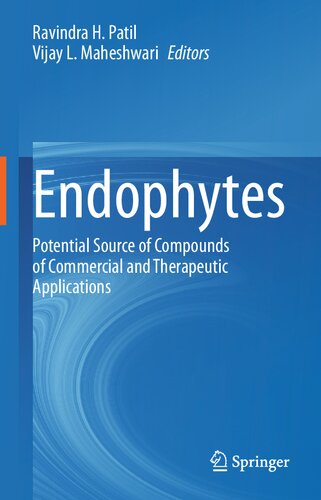

Most ebook files are in PDF format, so you can easily read them using various software such as Foxit Reader or directly on the Google Chrome browser.
Some ebook files are released by publishers in other formats such as .awz, .mobi, .epub, .fb2, etc. You may need to install specific software to read these formats on mobile/PC, such as Calibre.
Please read the tutorial at this link: https://ebookbell.com/faq
We offer FREE conversion to the popular formats you request; however, this may take some time. Therefore, right after payment, please email us, and we will try to provide the service as quickly as possible.
For some exceptional file formats or broken links (if any), please refrain from opening any disputes. Instead, email us first, and we will try to assist within a maximum of 6 hours.
EbookBell Team

4.0
46 reviewsThis book describes the various therapeutic and commercial applications of compounds produced by endophytes. Endophytes are microorganisms that reside in the living internal tissues of plants without showing any apparent symptom of their presence. During their life cycle, they establish a symbiotic or parasitic relationship with the host plant. The book discusses different kinds of compounds that these endophytes produce, and their potential properties such as antimicrobial, anti-oxidative, anti-inflammatory, anticancer, neutraceutical, immunomodulatory etc. Other prospects of entophytic biology such as fungi of wild and domesticated crop plants and their applications in sustainable agriculture have also been included. The book also provides details about various techniques used in endophyte research, metabolite detection and bioactivity-based assays to explore endophytes. Endophytes with phytohormones‐producing potential and their role in plant ―microbial interactions under stress are also discussed. The book also highlights novel strategies to tap into the hidden potential of endophytic fungi for the production of novel biomolecules using an integrated approach.
These microorganisms have attracted a lot of scientific attention worldwide because of their huge potential for novel phytochemicals, pharmaceuticals and lead compounds. Hundreds of new novel endophytic fungi have been isolated, identified and systematically studied in last decade. However, this is the first of its kind, systematic compilation of potential biotechnological applications of endophytic compounds. Chapter contributions from groups across the globe make this book very up-to-date and informative.
This book is very useful and interesting for students and researchers in the field of microbiology, plant sciences, mycology and pharmacology. It is also helpful for industry experts working on developing novel compounds.